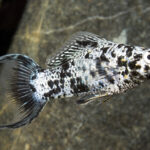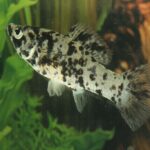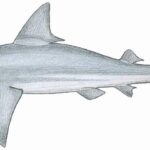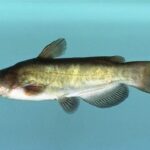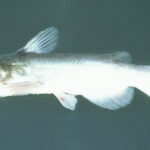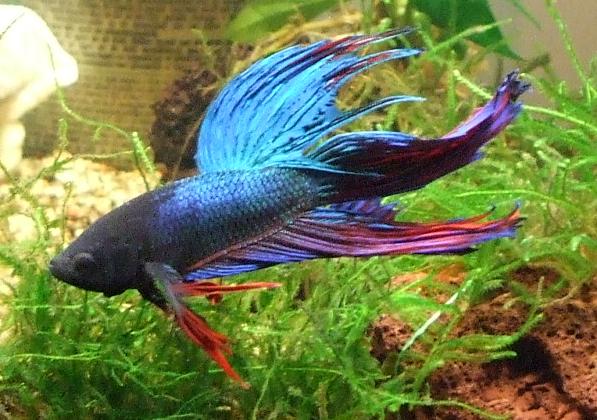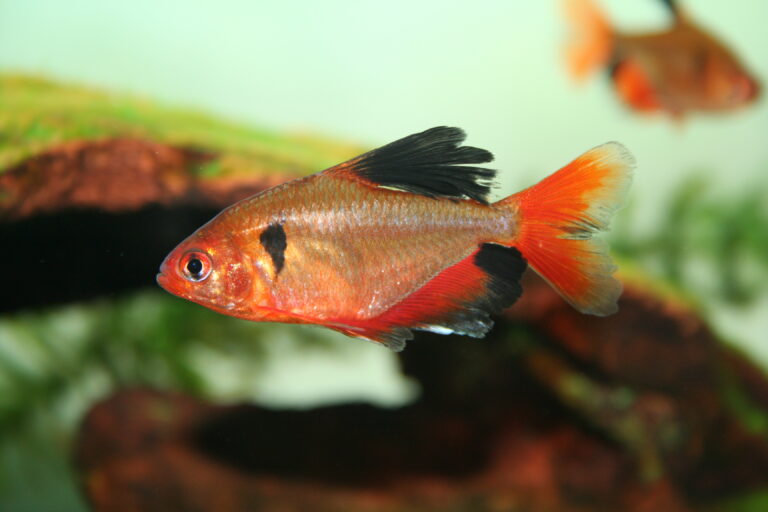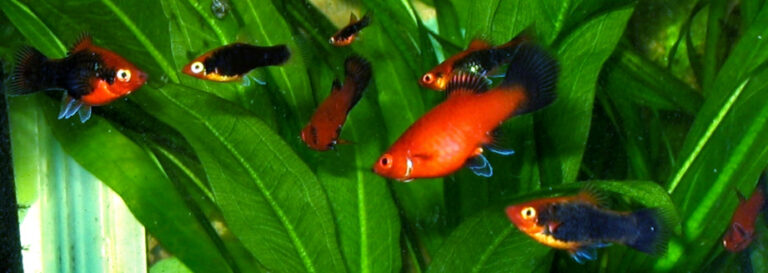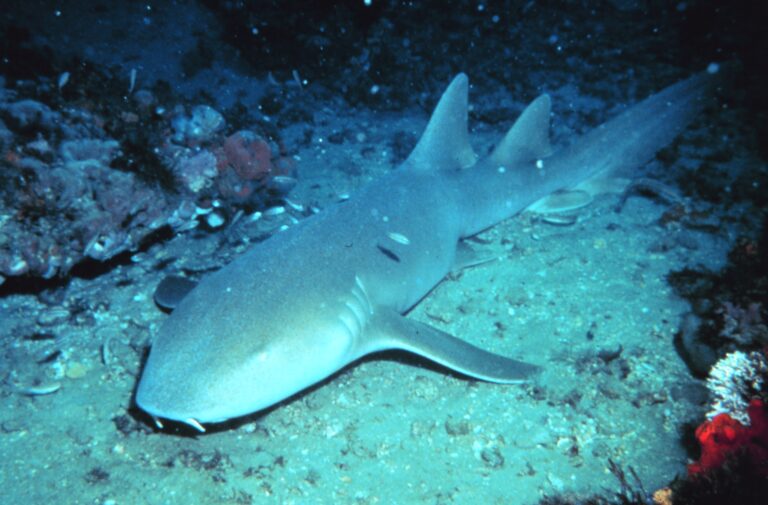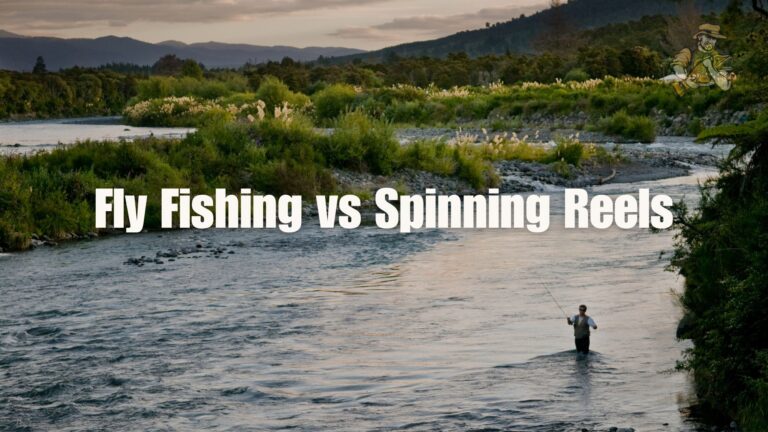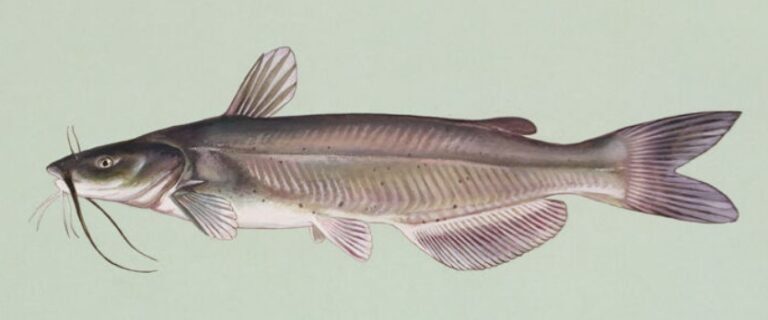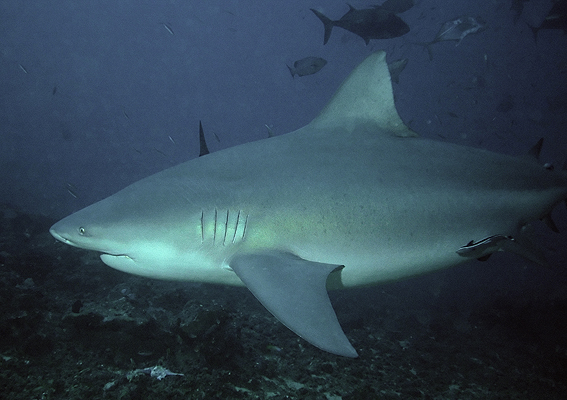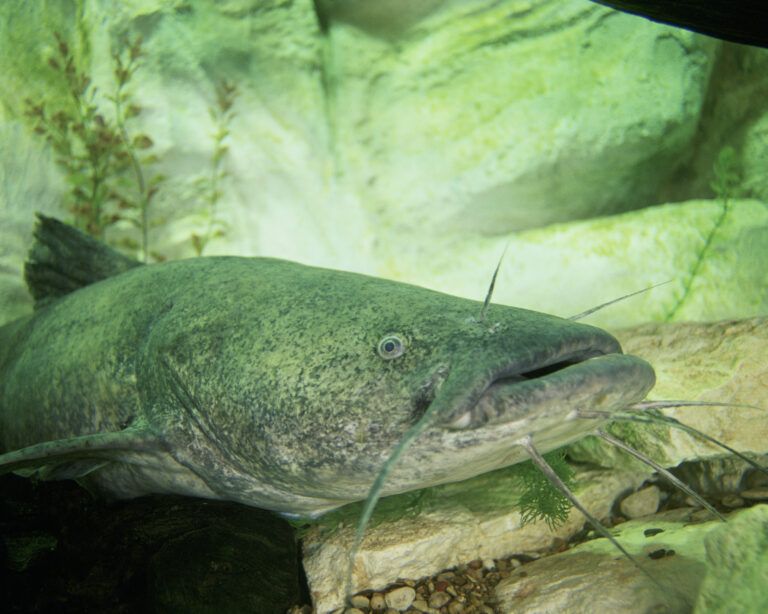Lemon Shark
By Ryan Maron | Last Modified: July 13, 2025
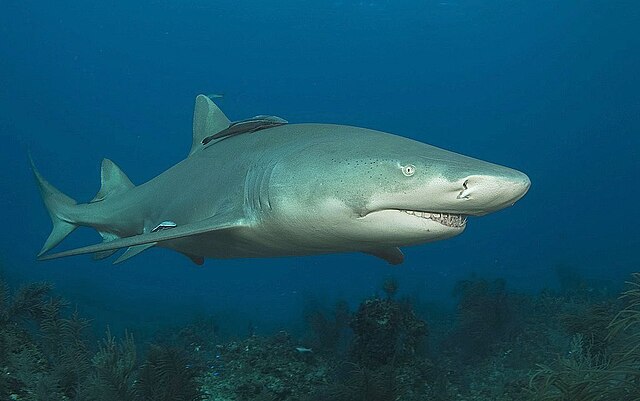
The Lemon Shark (*Negaprion brevirostris*) represents one of the most scientifically studied and ecologically significant predators in coastal marine environments. This distinctive requiem shark, easily recognized by its yellowish coloration and robust build, serves as a keystone species in shallow-water ecosystems throughout the western Atlantic and eastern Pacific. Lemon Sharks play a crucial role in maintaining the delicate balance of marine food webs, regulating prey populations while supporting healthy coral reef and seagrass bed communities. Their unique behavioral patterns, including site fidelity and complex social structures, have made them invaluable subjects for shark research and conservation efforts. The species demonstrates remarkable adaptability to various coastal habitats, from mangrove nurseries to offshore reef systems, making them essential indicators of marine ecosystem health.
| Feature | Details |
|---|---|
| Common Name | Lemon Shark |
| Scientific Name | Negaprion brevirostris |
| Family | Carcharhinidae |
| Typical Size | 240-340 cm (8-11 ft), 90-184 kg (200-405 lbs) |
| Habitat | Shallow coastal waters, mangroves, coral reefs |
| Diet | Fish, crustaceans, cephalopods, rays |
| Distribution | Western Atlantic, Eastern Pacific tropical waters |
| Conservation Status | Vulnerable (IUCN Red List) |
Taxonomy & Classification
The Lemon Shark belongs to the family Carcharhinidae, commonly known as requiem sharks, which includes over 50 species of medium to large-sized sharks. First described by Blainville in 1816, *Negaprion brevirostris* derives its genus name from the Greek words “negros” (black) and “prion” (saw), referring to the dark-edged teeth, while “brevirostris” means “short snout” in Latin. The species represents one of only two members of the genus *Negaprion*, with its sister species being the sicklefin lemon shark (*Negaprion acutidens*) found in the Indo-Pacific region.
Within the broader taxonomic hierarchy, Lemon Sharks are classified under the order Carcharhiniformes, which encompasses the ground sharks. This order represents the most diverse group of modern sharks, characterized by the presence of a nictitating membrane, two dorsal fins, and five gill slits. The family Carcharhinidae includes several other notable species such as the bull shark, tiger shark, and various reef sharks.
Phylogenetic studies have revealed that Lemon Sharks share a close evolutionary relationship with other members of the Carcharhinidae family, particularly the blue sharks and sandbar sharks. Molecular analysis indicates that the genus *Negaprion* diverged from other carcharhinid lineages approximately 20-25 million years ago during the Miocene epoch. The distinctive characteristics that separate Lemon Sharks from their relatives include their unique coloration, tooth morphology, and specific ecological preferences for shallow coastal environments.
Physical Description
The Lemon Shark’s most distinctive feature is its characteristic yellow-brown to olive-gray coloration, which provides exceptional camouflage in shallow, sandy coastal waters. This coloration can vary significantly based on environmental conditions, age, and geographic location, ranging from bright yellow in juveniles to more subdued brownish-yellow in adults. The ventral surface remains consistently white or pale yellow, following the typical countershading pattern observed in pelagic sharks.
Adult Lemon Sharks typically reach lengths of 240-340 centimeters (8-11 feet), with females generally growing larger than males. The maximum recorded length approaches 380 centimeters (12.5 feet), though specimens exceeding 350 centimeters are increasingly rare. Weight ranges from 90-184 kilograms (200-405 pounds) for mature individuals, with the largest recorded specimens weighing over 250 kilograms (550 pounds).
The species exhibits a robust, stocky build with a relatively short, broad snout that distinguishes it from other carcharhinid species. The head comprises approximately 20-23% of the total body length, with moderately large eyes positioned laterally. The dental formula consists of 13-15 teeth in the upper jaw and 12-14 in the lower jaw on each side, with the teeth displaying a narrow, curved design optimized for grasping prey rather than cutting.
Lemon Sharks possess two similarly-sized dorsal fins, which is unusual among requiem sharks where the first dorsal fin is typically much larger than the second. The first dorsal fin originates slightly behind the pectoral fins, while the second dorsal fin is positioned directly above the anal fin. The caudal fin displays the typical heterocercal structure with a well-developed lower lobe, providing efficient propulsion for both cruising and burst swimming.
Habitat & Distribution
Lemon Sharks demonstrate a preference for shallow, warm coastal waters, typically inhabiting depths ranging from 0.5 to 92 meters (1.6 to 302 feet). Their distribution encompasses the western Atlantic Ocean from North Carolina to southern Brazil, including the Gulf of Mexico and Caribbean Sea. In the eastern Pacific, populations occur from southern California to Ecuador, with notable concentrations around the Galápagos Islands.
The species exhibits strong site fidelity, particularly to nursery areas in mangrove systems and shallow lagoons. These environments provide essential protection for juveniles while offering abundant food resources and optimal water temperatures. Mangrove ecosystems serve as critical habitat for young Lemon Sharks, where they remain for the first several years of life before venturing into deeper waters.
Adult Lemon Sharks utilize a broader range of habitats, including coral reefs, seagrass beds, sandy flats, and nearshore rocky areas. They demonstrate remarkable adaptability to varying salinity levels, occasionally entering brackish waters and even freshwater systems for short periods. Water temperature preferences range from 21-30°C (70-86°F), with optimal conditions occurring between 24-28°C (75-82°F).
Seasonal migrations have been documented in some populations, with individuals moving to deeper waters during cooler months and returning to shallow areas during warmer periods. These movements appear to be influenced by water temperature, prey availability, and reproductive cycles. The species’ distribution is closely tied to the presence of suitable nursery habitats, as the loss of mangrove systems directly impacts population sustainability.
Diet & Feeding Behavior
Lemon Sharks are opportunistic predators with a diverse diet that varies significantly based on age, size, and habitat. Juveniles primarily consume small fish species, including grunt, snapper, and pinfish, along with crustaceans such as shrimp and crabs. As they mature, their diet expands to include larger fish species, stingrays, and occasionally cephalopods. Adult Lemon Sharks demonstrate a particular preference for bottom-dwelling fish species and rays, utilizing their flattened teeth to effectively grip and manipulate prey.
The feeding behavior of Lemon Sharks is characterized by both active hunting and opportunistic scavenging. They employ a variety of hunting strategies, including ambush predation near reef edges and systematic searching of seagrass beds. Their excellent electroreception capabilities, facilitated by numerous ampullae of Lorenzini, allow them to detect the electrical fields generated by hidden prey in sandy substrates.
Foraging patterns typically follow diel cycles, with increased activity during dawn and dusk periods. However, Lemon Sharks have been observed feeding throughout the day, particularly in areas with high prey density. Their feeding behavior is influenced by tidal cycles, with many individuals timing their foraging activities to coincide with tidal movements that concentrate prey in specific areas.
Social feeding behaviors have been documented, particularly among juveniles in nursery areas. Groups of young Lemon Sharks may cooperate to corner schools of fish, increasing individual feeding success. This behavior demonstrates the species’ capacity for complex social interactions and suggests that cooperative hunting strategies may be more widespread among sharks than previously recognized.
Behavior & Adaptations
Lemon Sharks exhibit complex behavioral patterns that reflect their highly evolved nervous system and advanced sensory capabilities. They demonstrate remarkable learning abilities, memory retention, and social recognition skills that rival those of many bony fish species. Laboratory studies have shown that Lemon Sharks can learn to navigate simple mazes, recognize individual humans, and modify their behavior based on past experiences.
Social behavior in Lemon Sharks is more complex than in most other shark species, with individuals forming loose aggregations based on size, sex, and familiarity. Juveniles particularly display schooling behavior in nursery areas, providing protection from predators and potentially facilitating learning through observation. Dominance hierarchies have been observed, with larger individuals typically assuming leadership roles within groups.
The species exhibits strong site fidelity, with individuals returning to the same areas repeatedly over extended periods. This behavior is particularly pronounced in relation to cleaning stations, where Lemon Sharks visit specific locations to have parasites removed by cleaner fish. These cleaning interactions demonstrate the species’ integration into complex reef ecosystems and their role in maintaining ecological balance.
Lemon Sharks possess exceptional sensory adaptations, including acute electroreception, lateral line sensitivity, and well-developed olfactory capabilities. Their ampullae of Lorenzini can detect electrical fields as weak as 0.01 microvolts per centimeter, allowing them to locate hidden prey and navigate using the earth’s magnetic field. The lateral line system provides detailed information about water movements and pressure changes, essential for detecting approaching prey or predators.
Thermoregulation behavior includes basking in shallow, warm waters during cooler periods and seeking deeper, cooler areas during peak temperature periods. This behavioral thermoregulation helps optimize metabolic efficiency and maintain optimal body temperature for various physiological processes.
Reproduction & Life Cycle
Lemon Sharks reach sexual maturity at approximately 12-15 years of age, with females typically maturing later than males. Mature females range from 220-240 centimeters (7.2-7.9 feet) in length, while males reach maturity at 175-195 centimeters (5.7-6.4 feet). The species exhibits a slow reproductive rate characteristic of large shark species, with females reproducing only every 2-3 years.
Mating occurs during spring and early summer months, with specific timing varying by geographic location. Courtship behavior involves complex swimming patterns and physical contact between potential mates. Males bite females during mating, leaving characteristic mating scars that can be used by researchers to identify reproductively active individuals.
Lemon Sharks are viviparous, with females retaining developing embryos within their bodies throughout gestation. The gestation period extends 10-12 months, during which embryos receive nourishment through a yolk sac placenta. Litter sizes typically range from 4-17 pups, with an average of 8-10 individuals per litter. Larger females generally produce more offspring than smaller individuals.
Pupping occurs in shallow nursery areas, particularly mangrove systems and protected lagoons. Newborn Lemon Sharks measure approximately 60-70 centimeters (24-28 inches) in length and are immediately independent, receiving no parental care. The yellow coloration is most pronounced in juveniles, providing optimal camouflage in their nursery habitats.
Juvenile Lemon Sharks remain in nursery areas for 2-3 years, gradually expanding their range as they grow. Growth rates are relatively slow, with individuals typically gaining 10-15 centimeters (4-6 inches) annually during their first decade of life. The species’ longevity is estimated at 25-30 years, though some individuals may live considerably longer.
Predators & Threats
Adult Lemon Sharks face few natural predators due to their size and defensive capabilities, though large bull sharks and tiger sharks may occasionally prey upon smaller individuals. Juvenile Lemon Sharks are more vulnerable to predation, facing threats from larger sharks, groupers, barracuda, and occasionally marine reptiles such as crocodiles in certain habitats.
The primary threats to Lemon Shark populations are anthropogenic, with habitat destruction representing the most significant long-term concern. Coastal development, mangrove destruction, and water pollution directly impact critical nursery areas essential for juvenile survival. The loss of mangrove systems removes vital breeding habitat and disrupts the species’ reproductive cycle.
Commercial and recreational fishing pressure poses substantial threats to Lemon Shark populations. The species’ slow growth rate, late maturity, and low reproductive output make them particularly vulnerable to overfishing. Longline fishing operations frequently capture Lemon Sharks as bycatch, while targeted fishing for their fins, meat, and liver oil continues in some regions.
Climate change represents an emerging threat, with rising water temperatures potentially affecting the species’ distribution and prey availability. Ocean acidification may impact the shellfish and crustaceans that form part of their diet, while sea level rise could alter the shallow coastal habitats they depend upon.
Pollution, including plastic debris, chemical contaminants, and heavy metals, affects Lemon Sharks through bioaccumulation in their tissues. These pollutants can impact reproduction, immune function, and overall health. Boat strikes and fishing gear entanglement represent additional sources of mortality, particularly in heavily trafficked coastal areas.
Conservation Status
The International Union for Conservation of Nature (IUCN) classifies the Lemon Shark as Vulnerable on the Red List of Threatened Species, reflecting significant population declines across much of its range. This designation indicates that the species faces a high risk of extinction in the wild if current trends continue without intervention. Population assessments suggest declines of 30-50% over the past three generations in several key habitats.
Regional assessments reveal varying conservation statuses, with some populations experiencing more severe declines than others. The Gulf of Mexico and Caribbean populations are considered particularly vulnerable due to intense fishing pressure and habitat degradation. In contrast, some Pacific populations remain relatively stable, though they face increasing pressure from coastal development.
The species is protected under various national and international regulations, including listing under the Convention on International Trade in Endangered Species of Wild Fauna and Flora (CITES) Appendix II. This listing requires permits for international trade and helps regulate the global shark fin trade. Several countries have implemented specific protections for Lemon Sharks, including fishing prohibitions and marine protected areas.
Marine protected areas play a crucial role in Lemon Shark conservation, particularly when they encompass critical nursery habitats. The establishment of no-take zones in mangrove systems and shallow coastal areas has shown positive results in maintaining local populations. However, the species’ wide-ranging nature requires coordinated conservation efforts across multiple jurisdictions.
Research and monitoring programs are essential for understanding population trends and developing effective conservation strategies. Long-term studies at sites such as Bimini in the Bahamas have provided valuable insights into Lemon Shark ecology and behavior, informing management decisions and conservation planning.
Human Interaction
Lemon Sharks generally exhibit non-aggressive behavior toward humans, making them popular subjects for ecotourism and research activities. Their relatively docile nature and predictable behavior patterns have made them ideal candidates for shark diving operations in various locations throughout their range. These activities provide economic incentives for local communities to protect shark populations and their habitats.
The species’ importance to local fishing communities varies by region, with some areas historically relying on Lemon Sharks for subsistence and commercial purposes. Their meat is consumed in some Caribbean and Central American countries, while their fins are valued in the international shark fin trade. However, the economic value of live Lemon Sharks for ecotourism often exceeds their value as a fisheries resource.
Scientific research on Lemon Sharks has contributed significantly to our understanding of shark behavior, ecology, and conservation. The species’ tolerance of handling and ability to survive in captivity have made them valuable research subjects. Studies on Lemon Sharks have provided insights into shark intelligence, social behavior, and sensory capabilities that apply to many other shark species.
Lemon Sharks occasionally interact with recreational fishing activities, though they are generally not considered a primary target species for sport fishing. When captured, they are increasingly being released as part of catch-and-release conservation efforts. Education programs highlighting the species’ ecological importance and conservation needs have helped reduce negative attitudes toward sharks.
The species’ role in marine ecosystems provides indirect benefits to human communities through ecosystem services such as maintaining fish population balance and supporting healthy reef systems. These services contribute to the overall productivity and sustainability of marine resources that many coastal communities depend upon.
Interesting Facts
Lemon Sharks possess remarkable cognitive abilities that set them apart from many other shark species. Research has demonstrated their capacity for social learning, with individuals able to learn new behaviors by observing others. This ability extends to problem-solving tasks, where Lemon Sharks can navigate complex mazes and remember solutions for extended periods.
The species exhibits one of the strongest site fidelity patterns among sharks, with some individuals returning to the same locations year after year. Researchers have documented cases of Lemon Sharks returning to identical spots within nursery areas after absences of several months, suggesting sophisticated spatial memory and navigation abilities.
Lemon Sharks demonstrate unusual social behaviors for sharks, including the formation of friendships and recognition of individual humans. Studies have shown that they can distinguish between different people and may preferentially approach familiar individuals. This social recognition extends to other sharks, with individuals forming stable associations that can last for years.
The species’ electroreception capabilities are so sensitive that they can detect the electrical signature of a fish’s heartbeat from several feet away. This ability, combined with their other sensory adaptations, makes them incredibly efficient predators in their coastal environment. They can even detect electrical fields generated by metallic objects, which has implications for their interactions with fishing gear.
Lemon Sharks exhibit seasonal color changes, with individuals becoming more vibrant yellow during warmer months and darker during cooler periods. This color variation may be related to thermoregulation, camouflage, or social signaling. The intensity of coloration also varies with habitat, with sharks in sandy areas displaying brighter yellow tones than those in darker environments.
The species plays a crucial role in maintaining the health of seagrass beds through their feeding activities. By controlling populations of herbivorous fish and invertebrates, Lemon Sharks help prevent overgrazing that could damage these important marine ecosystems. Their presence in an area often indicates a healthy, balanced marine environment.
Conclusion
The Lemon Shark stands as a remarkable example of evolutionary adaptation and ecological importance within coastal marine ecosystems. Their unique combination of advanced cognitive abilities, complex social behaviors, and critical ecological role makes them indispensable to the health of coral reefs, mangrove systems, and seagrass beds. As apex predators, they maintain the delicate balance of marine food webs while serving as indicators of ecosystem health. The species’ vulnerable conservation status highlights the urgent need for continued protection efforts, habitat preservation, and sustainable management practices to ensure their survival for future generations.
Share The Article:
More Fish Species:
-
Crown Tail Betta
The Crown Tail Betta stands as one of aquaculture’s most distinctive ornamental fish, renowned for its dramatically elongated, spiky…
-
Serpae Tetra
The Serpae Tetra (Hyphessobrycon eques) stands as one of South America’s most recognizable freshwater aquarium species, distinguished by its…
-
Shubunkin Goldfish
The Shubunkin Goldfish (Carassius auratus) represents one of the most popular and visually striking varieties of goldfish kept in…
-
Tuxedo Platy
The Tuxedo Platy (Xiphophorus maculatus) stands as one of the most recognizable and beloved freshwater aquarium fish species, distinguished…
-
Mickey Mouse Platy
The Mickey Mouse Platy (*Xiphophorus maculatus*) stands as one of the most recognizable and beloved freshwater aquarium fish in…
-
Nurse Shark
The Nurse Shark (Ginglymostoma cirratum) stands as one of the most recognizable and ecologically significant bottom-dwelling sharks in tropical…
Discover
-
Best Fishing Spots in California: Lakes, Rivers, and Coastal Hotspots
California fishing has always struck me as a study in beautiful contradictions. From snow-fed alpine lakes to sweltering desert…
-
Pacific Northwest Salmon Fishing: Guide to Puget Sound and Columbia River
There’s something almost magical about the way Pacific Northwest salmon fight on the end of your line. I still…
-
How to Catch Mahi-Mahi: Offshore Tactics That Fill Coolers Fast
I still remember my first encounter with mahi-mahi (also called dolphin fish or dorado). We were about 20 miles…
-
Ice Fishing Techniques for Anglers in 2025
Last January, I was out on Higgins Lake during that brutal cold snap – you remember, when it dropped…
-
Fly Fishing vs Spinning Reels: Choosing the Right Technique
If there’s one debate that never seems to end in fishing circles, it’s fly fishing versus spinning gear. I’ve…
-
7 Best Family-Friendly Fishing Destinations in the U.S. (Tested with Kids!)
I still remember the first time I took my son Tommy fishing. He was five, armed with a Spider-Man…
Discover
-
How to Fish for Salmon in 2025: Expert Tips and Techniques
Few fishing experiences match the thrill of feeling a salmon take your line. These powerful fish have captivated anglers…
-
Smallmouth Black Bass Fishing: Complete Guide for 2025
If you’ve ever felt that sudden, powerful tug on your line followed by an acrobatic jump that leaves your…
-
Beluga Fishing: Techniques That Actually Work (Not Theory)
When it comes to beluga fishing, there’s a world of difference between what you read in theory and what…
-
Channel Catfish
The Channel Catfish stands as one of North America’s most recognizable and economically important freshwater fish species. Known scientifically…
-
Bull Shark
The Bull Shark represents one of the most formidable apex predators in marine ecosystems worldwide. Known scientifically as Carcharhinus…
-
Flathead Catfish
The Flathead Catfish stands as one of North America’s most formidable freshwater predators, commanding respect from both anglers and…

